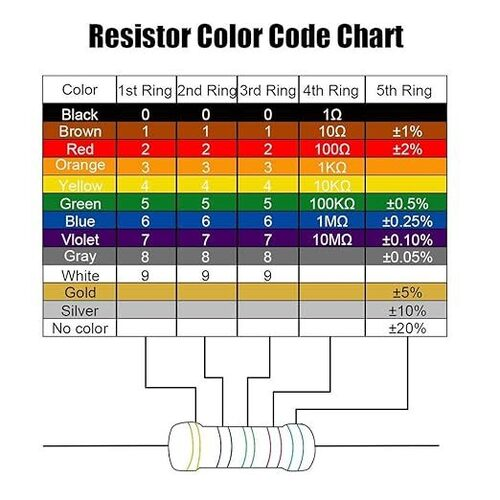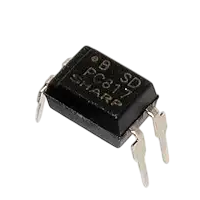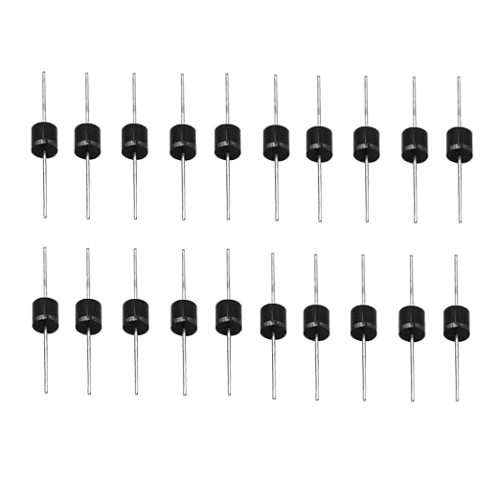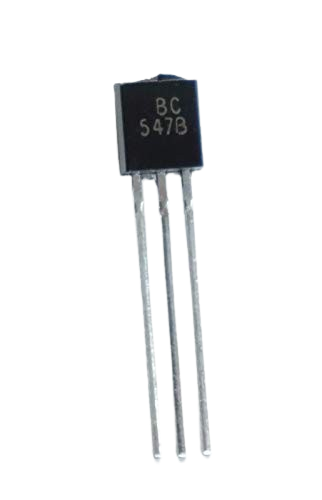Resistors in IoT: Types, Applications, Selection Guide, and Circuit Examples

Overview
Introduction
Resistors are one of the most fundamental components in electronics and IoT (Internet of Things) devices. They play a vital role in controlling current, dividing voltage, limiting signals, and protecting sensitive components. Whether you're designing a smart sensor or a Wi-Fi-enabled microcontroller circuit, understanding resistors is essential for ensuring stability and efficiency.What is a Resistor?
A resistor is a passive electronic component that opposes or limits the flow of electric current in a circuit. It works on Ohm’s Law, where:
V = I × R
-
V = Voltage (Volts)
-
I = Current (Amperes)
-
R = Resistance (Ohms Ω)
Resistors do not generate power but dissipate it as heat. They are used in signal conditioning, biasing active elements, voltage division, pull-up/down configurations, and current limiting circuits.
Types of Resistors (With Use in IoT)
1. Fixed Resistors
- Provide a constant resistance.
- Used in basic voltage dividers and pull-up/pull-down circuits.
- Common types:
- Carbon Film
- Metal Film
- Wire-wound
2. Variable Resistors
- Resistance can be adjusted manually.
- Used in calibration circuits or sensors.
- Types:
- Potentiometers
- Rheostats
- Trimmers
3. SMD Resistors (Surface-Mount Devices)
- Small size, ideal for compact IoT boards.
- Used in PCBs for smart devices.
4. Thermistors
- Resistance changes with temperature.
- Used in temperature sensing applications.
- Two types:
-
NTC (Negative Temperature Coefficient) – Resistance decreases as temperature increases.
-
PTC (Positive Temperature Coefficient) – Resistance increases with temperature.
-
5. Photoresistors (LDR)
- Resistance varies with light.
- Used in smart lighting or ambient detection.
6. Resistor Networks/Arrays
- Multiple resistors in one package.
- Saves space on PCBs, used in input/output systems.
7. Shunt Resistors
- Used for current sensing applications in power monitoring systems.
Applications of Resistors in IoT Projects
- Voltage division for sensor inputs (e.g., analog sensors like LM35)
- LED current limiting in indication circuits
- Pull-up and pull-down resistors for microcontroller GPIO pins
- Debouncing for mechanical switches
- Signal filtering and waveform shaping
- Sensor calibration (with potentiometers)
- Power management in power supply circuits
- Protection against overcurrent or short circuits
How to Choose the Right Resistor for IoT Applications
-
Determine Required Resistance (Ω)
Use Ohm’s Law (V = IR) based on your circuit needs. -
Choose Appropriate Power Rating (Wattage)
-
Formula: P = V × I
-
Choose at least 2× higher wattage than your calculated need for safety.
-
-
Select Tolerance
- ±1%, ±5%, or ±10% depending on accuracy required.
-
Form Factor
- Through-hole for prototyping
- SMD for compact PCBs in IoT devices
-
Environmental Conditions
- Use high-temperature or moisture-proof resistors in harsh conditions.
Resistor Color Code Chart (Quick Reference)
| Color | Value | Multiplier | Tolerance |
|---|---|---|---|
| Black | 0 | 1 | |
| Brown | 1 | 10 | ±1% |
| Red | 2 | 100 | ±2% |
| Orange | 3 | 1k | |
| Yellow | 4 | 10k | |
| Green | 5 | 100k | ±0.5% |
| Blue | 6 | 1M | ±0.25% |
| Violet | 7 | 10M | ±0.1% |
| Gray | 8 | ±0.05% | |
| White | 9 | ||
| Gold | 0.1 | ±5% | |
| Silver | 0.01 | ±10% |
Practical Example: LED with Current-Limiting Resistor
Circuit Description:
Connecting an LED to a microcontroller pin like ESP32 or Arduino requires a current-limiting resistor to prevent damage.Components:
- 1x LED
- 1x 220Ω Resistor
- 1x Arduino/ESP32
- Breadboard + wires
Calculation:
- Voltage (V) = 5V (from microcontroller)
- LED forward voltage (Vf) = 2V
- Desired current (I) = 10mA
R = (5V - 2V) / 0.01A = 300Ω
Use standard resistor = 220Ω to 330Ω (for practical use)
Connection:
Result:
LED glows safely without overcurrent, and GPIO remains protected.Commonly Available Resistor Values in Market
Standard Resistor Series (E-Series)
Resistors ko industry standard ke hisaab se E-series me divide kiya gaya hai. Har E-series ka matlab hota hai ki usme kitne fixed values ek decade (e.g. 10Ω to 100Ω) me available hain.
| Series | No. of Values per Decade | Tolerance |
|---|---|---|
| E6 | 6 values | ±20% |
| E12 | 12 values | ±10% |
| E24 | 24 values | ±5% |
| E48 | 48 values | ±2% |
| E96 | 96 values | ±1% |
| E192 | 192 values | ±0.5% to ±0.1% |
Most Commonly Used Resistor Values (Market Available)
(As per E6, E12, and E24 series)Low-Value Resistors (Used for Current Sensing, Power)
- 0.1Ω, 0.22Ω, 0.33Ω, 0.47Ω
- 1Ω, 2.2Ω, 3.3Ω, 4.7Ω, 5.6Ω, 6.8Ω
Mid-Range Resistors (Used for Logic Control, Pull-Up/Down, LEDs, etc.)
- 10Ω, 22Ω, 33Ω, 47Ω, 56Ω, 68Ω, 75Ω
- 100Ω, 150Ω, 220Ω, 330Ω, 470Ω, 560Ω, 680Ω, 750Ω
High-Value Resistors (Used in Sensors, Voltage Dividers)
- 1kΩ, 2.2kΩ, 3.3kΩ, 4.7kΩ, 5.6kΩ, 6.8kΩ, 10kΩ
- 22kΩ, 33kΩ, 47kΩ, 56kΩ, 68kΩ, 100kΩ, 220kΩ, 470kΩ
Very High-Value Resistors (Used for Leakage Sensing, High Impedance Circuits)
- 1MΩ, 2.2MΩ, 4.7MΩ, 10MΩ
Common Resistor Wattage Ratings (Power Ratings)
| Power Rating | Package Type | Usage Area |
|---|---|---|
| 1/8W (0.125W) | SMD only | Small IoT circuits, wearables |
| 1/4W (0.25W) | Most common (Axial) | General purpose (Arduino, sensors) |
| 1/2W (0.5W) | Higher dissipation | Motor drivers, relays |
| 1W – 5W | Wire-wound/ceramic | Power supply, high current applications |
Extra Tip for IoT Designers
IoT ke liye mostly yeh values kaafi use hoti hain:-
220Ω, 330Ω, 470Ω — LED aur GPIO ke liye
-
1kΩ, 4.7kΩ, 10kΩ — Pull-up/pull-down resistors
-
100kΩ – 1MΩ — Analog sensors ya feedback ke liye
-
0.1Ω – 1Ω (Low Ohm) — Current sensing (shunt resistors)
Where to Buy
Prices may vary. Click on "Buy Now" to check current availability and pricing.
Administrator
Frequently Asked Questions
Common questions about Resistors in IoT: Types, Applications, Selection Guide, and Circuit Examples. Find answers to the most frequently asked questions.
User Reviews & Comments
Share your experience with this IoT Blog. Your feedback helps our community make informed decisions!
Share Your Experience
Help others by sharing your thoughts about this IoT Blog.
Related Blogs
Explore more IoT Blogs in the same category

PC817 Optocoupler: Working, Pinout, Circuit, Applications, and Selection Guide
Supporting Components
PC817 is a widely used optocoupler that provides electrical isolation between input and output using an internal LED and phototransistor. This guide explains its working principle, pinout configuration, circuit connection, and real-world applications in automation and safety systems. Whether you're designing a power supply or a microcontroller interface, PC817 offers a reliable solution for signal isolation.

Diodes Explained: Types, Working, Applications, and Selection Guide for Electronics Projects
Supporting Components
Discover everything about diodes in electronics — from types and working principles to real-world applications and how to choose the right diode for your project. This comprehensive guide simplifies diode selection and usage, making it perfect for students, hobbyists, and professionals. Enhance your electronics knowledge with trusted and clear information.

Transistors: Working, Types, Applications, and Complete Guide for Beginners and Engineers
Supporting Components
Discover everything about transistors in this complete guide. Learn how transistors work, explore different types like BJT and MOSFET, and understand their real-world applications in electronics. Perfect for students, beginners, and professionals seeking clear, accurate, and practical information about this key electronic component.
No Reviews Yet
Be the first to share your experience with this IoT Blog!